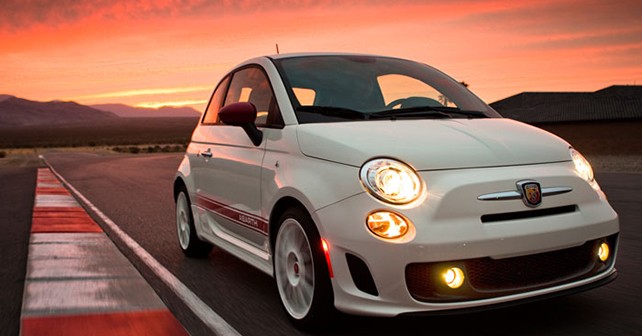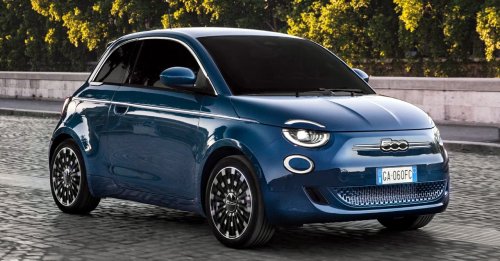Before it heads to India, Anniruddha tried out the Abarth version of the cute little Fiat 500 to find out if it really does have a sting in its tail.
The Fiat 500 Abarth is a high-performance version of the cute little Cinquecento, and boy is it a joy to drive!
In the 1950’s, Karl Abarth believed that racecars with great performance could be derived from small cars like the original 500. He founded Abarth and Company, and used his astrological sign – the Scorpio – as the Companies logo.
The Company started out making racing cars and high performance exhaust systems. In the mid 60’s, Abarth diversified and began producing various tuning kits for road vehicles, mainly for Fiat. In 1971, Fiat purchased the Company, and Abarth became Fiats racing division. Over the next two decades, the Abarth brand was used to signify high performance Fiats. Likely inspired by the success of special edition high performance Mini Coopers, Fiat launched the Abarth version of the 500 in 2008. With the likes of Michael Schumacher extolling the virtues of the car, it certainly got off on the right foot and now it is finally poised to hit the Indian market.
With menacing scorpion logos on the grill, side panels and steering wheel, it’s clear that this is not a regular 500. To drive home the point, Abarth is spelled out in large letters on the side of the car. With a wider front air dam, aggressive looking side skirts and optional 17-inch lightweight forged wheels, the Abarth certainly looks like it has the sting to go with all those badges. The 500 Abarth has a turbocharged 1.4 liter multi air engine that produces 160 horsepower, a significant 60% increase over the base model. It’s not just more power though, Abarth-tuned performance hardware results in a lowered ride height, beefier suspension, larger brakes and wider tires. Think of the Abarth as you would the M division at BMW. They have worked on all aspects of the car, and the end product is not only highly capable but also a lot of fun.
Get into the Abarth and one is greeted by a thick rim steering wheel swathed in perforated leather and a flat bottom that a makes getting into the vehicle easier. Behind the steering wheel, the Fiat 500 Abarth features a large concentric instrument cluster, with an ambitious 160mph (250km/h) speedometer – and, of course, a tachometer and trip computer as well. For a touch of visual excitement, the instrument-panel is wrapped in black leather with red accent stitching. There is also a turbo-boost gauge with an integrated shift light in the center that lets the driver know when it’s time to change gear. The racing style bucket seats are mounted high, which gives passengers the impression that they’re in a larger vehicle than the 500. The steering wheel is height adjustable, but does not telescope, which makes finding a good driving position a process of tiny adjustments till it feels just right. The rear seats are cramped, and are best used for short distances or for transporting kids. Buyers of the Abarth are likely to have other cars in their stable, so its lack of comfortable rear seating space shouldn’t be an issue.
Start the engine, and one is greeted by a raspy exhaust note that makes the Abarth sound like a rally car. On the dashboard, there’s a sport button than increases the boost level of the turbo, releasing all 160 horsepower. For a car of this size and weight, that’s just the perfect amount of power. Coupled with a five-speed manual gearbox, the Abarth is more fun to drive than cars that have more than twice its horsepower. There is virtually no turbo-lag, and there’s plenty of torque right through the power-band. Powerful front wheel drive cars are often plagued by torque steer – not so with the Abarth.
As is becoming the norm, the Abarth has an electric power steering, which feels a little numb at low speeds but weighs up nicely as speeds increase. On the road, the Abarth is entertaining and is eager to respond to the drivers every input. The ride is firm without being harsh. The car has dual-valve Frequency Selective Damping (FSD) KONI front-shock absorbers that do a great job on uneven surfaces. For the most part, the suspension is compliant but the short wheelbase can unsettle the rear of the car on bumpy roads. The Abarth excels on smooth tarmac and corners with little to no body roll. The brakes are more than adequate and have good feel. Front and rear brake calipers are lacquered in red paint, which add to the visual appeal.
The Abarth is like a terrier that’s looking to break free from its leash and get into mischief. It may be a small car, but it has the power and the handling to take on much larger vehicles. It is a great city car, one that can squeeze into the tiniest of spaces but also entertain its owner if he or she wants to have some fun.






























Write your Comment